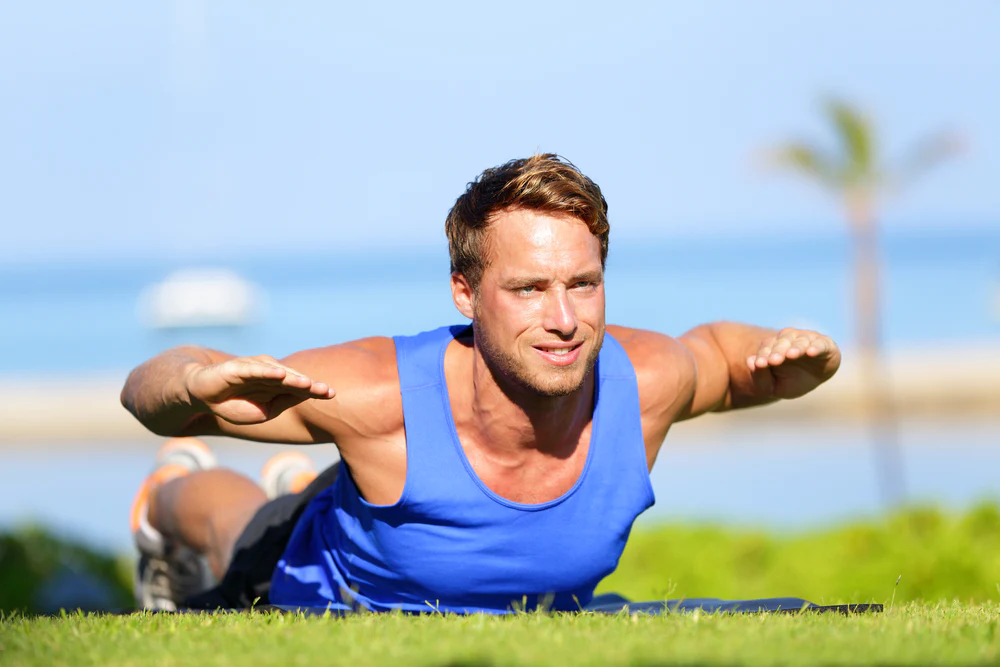Spinal stenosis is a condition that causes the narrowing of the spinal canal, which can lead to various symptoms. It can be caused by age-related spine degeneration or by conditions like arthritis or trauma. In the latter case, the condition is known as “spinal stenosis”, which is the term used to describe the narrowing of the space where the spinal cord and nerves reside.
Spinal stenosis is a very common condition affecting approximately 10% of adults over 60. It can cause lower back, legs, buttocks, or neck pain. Many treatments are available for this condition, but it is important to seek treatment as soon as possible. The earlier you start, the better your chances of getting better results.
Spinal stenosis is a condition characterized by a spinal canal narrowing that can cause pain, numbness, and weakness in the legs and arms. While there is no cure for spinal stenosis, exercises can help to alleviate symptoms and improve overall mobility. However, it is important to avoid certain exercises that can aggravate the condition and make symptoms worse.
Spinal stenosis Exercises to Avoid
High-Impact Aerobic Exercise:

High-impact aerobic exercises such as running, jumping, and plyometrics can put a lot of stress on the spinal column and exacerbate symptoms of spinal stenosis. Instead, opt for low-impact exercises like cycling or swimming.
High-impact aerobics can damage your knees, hips, and feet. It can also hurt your back, neck, and arms. If you engage in high-impact aerobics too often, you might find that you are getting injured. High-impact aerobics usually involve jumping, running, skipping, tumbling, and dancing. It is very important to consult with your doctor before doing high-impact aerobics. He or she can check if you are fit enough to participate in such exercises.
Sit-ups and Crunches:

Sit-ups and crunches put a lot of pressure on the lower back, which can be problematic for those with spinal stenosis. Instead, focus on exercises that target the core while keeping the spine in a neutral position, such as planks and bird dogs.
These exercises can cause injury. Don’t do them unless you are completely ready. Start with light exercise. Do only what you can do. Then, once you feel comfortable, move on to more intense exercise. Don’t just sit on your butt all day long. Stand up and do a little bit of exercise. Your body will thank you for it.
Extension Exercises:

Extension exercises like backbends and hyperextensions can also put a lot of pressure on the lower back and make symptoms of spinal stenosis worse. Instead, focus on exercises that promote spinal flexion, such as forward bends and seated spinal twists.
A lot of people like to exercise and they like to do so every day. In the first place, this is not a good thing. Exercise should be done only a few times a week and not daily. Daily exercise will cause your muscles to become weak. Your body will eventually become soft. If you don’t have time for exercise, you should go to the gym.
Heavy Lifting:

Lifting heavy weights can put a lot of stress on the spine and exacerbate symptoms of spinal stenosis. Instead, focus on exercises that promote strength and stability without putting too much stress on the spine, such as bodyweight exercises and using resistance bands.
While lifting heavy weights is good for building muscle, you need to be careful to avoid injury. To avoid injury, you need to follow some guidelines. First of all, you should warm up before you start lifting. You should stretch your muscles and joints. Next, you should lift your weight slowly. You should also use light weights and lift them only a few times. If you are exercising with weights, you need to rest often.
Also Read. 7 Exercises to do Everyday To Stay Fit
Exercises to Try
Walking:
Walking is a great low-impact exercise that can help to improve overall mobility and alleviate symptoms of spinal stenosis. Aim for at least 30 minutes of walking per day at a moderate pace.
Yoga:
Yoga can be beneficial for those with spinal stenosis as it promotes flexibility and strength in the spine. Poses like Cobra, Cat-Cow, and Child’s pose can help to relieve pressure on the spine.
Stretching:
Stretching can help to improve flexibility in the spine and alleviate symptoms of spinal stenosis. Try stretching exercises such as hamstring stretches, quad stretches, and seated spinal twists.
Strengthening exercises:
Strengthening exercises such as the McKenzie extension and the pelvic tilt can help to stabilize the spine and alleviate symptoms of spinal stenosis.
It is important to note that everyone’s condition is different and it is important to consult with a doctor or physical therapist before starting any exercise program. They can also help you to tailor your exercise program to your specific needs and abilities.
What is The Newest Treatment For Lumbar Spinal Stenosis?

It is a medical procedure used to treat lumbar spinal stenosis, which is a painful condition that affects a person’s ability to walk. The treatment involves cutting open the affected area of the spine. Once the affected area has been cut open, a special wire is inserted into the damaged area. This wire has a magnetic force that is supposed to help stimulate the bone to heal itself. In some cases, the damaged area of the spine may be removed so that a new piece of bone can grow inside the spine to replace the damaged bone.
When Can I Return To Sports After My Spinal Stenosis Diagnosis?
There is no definite answer to this question. Many people with spinal stenosis have returned to sports. Some people can play golf while others cannot. It depends on the severity of their symptoms. For some people, it is more difficult to return to sports.
If you are one of those, it is important that you don’t think about it too much. Instead, you should just try to continue playing sports and doing your best. Don’t forget to ask your doctor about it. Make sure that he/she knows everything about your condition and whether you can play sports or not. Remember, your doctor can always help you if you need to stop playing sports because of your condition.
How Can You Prevent Your Spinal Stenosis From Getting Worse?
The first thing that you should do is take care of yourself. To prevent spinal stenosis from getting worse, you should try to avoid bending over. It is recommended that you keep your back straight when standing and sitting. To prevent spinal stenosis from getting worse, you should take breaks when you are doing heavy lifting or pushing and pulling heavy objects.
Conclusion!
While there is no cure for spinal stenosis, exercises can help to alleviate symptoms and improve overall mobility. However, it is important to avoid certain exercises that can aggravate the condition and make symptoms worse.
By avoiding high-impact aerobic exercise, sit-ups and crunches, extension exercises, and heavy lifting, and instead focusing on low-impact exercises, yoga, stretching and strengthening exercises, those with spinal stenosis can improve their quality of life.
FAQs.
What can make spinal stenosis worse?
One of the things that make spinal stenosis worse is smoking. Smoking is a habit that people can’t quit easily. It is important to take a break from smoking if you want to improve your condition. Smoking damages your lungs and it affects your heart and your blood vessels.
It can also cause coughing, wheezing, and other breathing problems. Smoking can also damage your spine. It is important to quit smoking as soon as you can. If you quit smoking, you will be able to live a better life. Smoking can also make you more vulnerable to conditions such as osteoporosis and arthritis.
What exercise is best for spinal stenosis?
To make sure that your spine remains strong and healthy, you can do some exercises. These exercises will help prevent you from getting more spinal stenosis. You can do some push-ups, sit-ups, and chin-ups to maintain the health of your spine. You can also use weights to strengthen your muscles. It is important that you do these kinds of exercises every day. Remember, it’s the little things that count.
Can exercise make spinal stenosis worse?
Many people wonder if exercise makes spinal stenosis worse. Exercise can cause back pain and can be painful. It’s best to be cautious about how much exercise you do, especially if you suffer from back problems. Try to avoid exercise that causes your back to hurt.
Are squats OK for spinal stenosis?
I don’t think so. I have been doing those for years, and I haven’t noticed any difference. Maybe if you were having a bad back, it would help. I’m not going to lie to you. I’m not saying that you shouldn’t try to strengthen your back muscles, but I don’t think it’s really going to help you. Most people who have back problems already exercise to improve their back.
